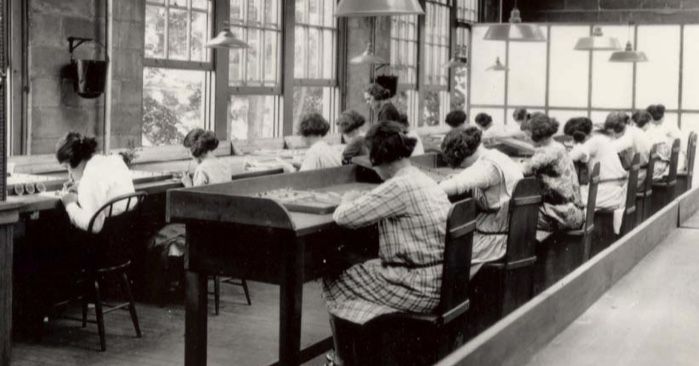
6 Books to Bring Together Women’s Suffrage and Labor Movements
The Labor of Suffrage
Like any political movement, the women’s suffrage movement was large, complicated, and had a fair amount of internal disagreements. A major component of the women’s movement included addressing unsafe labor practices. Strikes and protests were cropping up to address these unsafe conditions and women were participating because they were so exploited. The 2015 film Suffragette uses the perspective of Carey Mulligan’s laundry worker to display the massive amount of work expected from women, especially poor women, both in factories and at home. Although set in England, the U.S. followed the example of having few protections on the factory floor, most notable in the devastating Triangle Shirtwaist Factory Fire—a disaster in which nearly all the people who died were women workers. The International Ladies’ Garment Workers’ Union organized many protests in response to the fire.
At the turn of the century, more suffragists seemed to realize that working lower class women could be powerful allies to their movement. Harriot Eaton Stanton Blatch (daughter of Elizabeth Cady Stanton) founded the Equality League of Self-Supporting Women in 1907 specifically to recruit working women to the cause of suffrage. The name was later changed to the Women’s Political Union and led by suffragist Alice Paul. Labor activism was a necessary revitalization to the movement for women’s suffrage and arguably made it a much more pressing, vital issue to many people. Rich women started marching alongside women labor activists in order to consolidate more support for suffrage, but at the same time, there was still a yawning class divide that remained difficult to overcome. Fundamentally, the well-heeled suffragists were just not as revolutionary in their politics as labor activists. This could also help explain the rampant racism of the suffrage movement—they wanted the support of labor activists and Black women, but had no interest in major political change that would upset their societal standing.
However, the inclusion of labor activists did not address the major racialized issues in the women’s suffrage movement. At the same time, Ida B. Wells and other Black women leaders were working on different organizations into suffrage because they were excluded from white suffragist organizations. Though there are exceptions to this racism in the suffragette movement, it’s impossible to talk about suffrage without talking about who they very deliberately left behind.
Understanding the movement of women’s suffrage means taking in all of its successes, failures, and stagnations. Getting into labor activism and women’s suffrage is an important step in understanding how social movements towards equality should be radically inclusive. If women’s suffrage had stayed with the upper-crust leadership of Elizabeth Cady Stanton and Susan B. Anthony, they may never have made that major political gain of “universal” suffrage.
Many labor activists were addressing the issue of equality writ large. If a laborer or worker does not have a political voice, they have no way to fight for better conditions and changing laws. At the same time, labor unions themselves were historically exclusionary and very racist. This is why, when women’s suffrage was granted, it was only given to white women. The U.S. federal government would not want to give the Black American workforce a political voice, especially the working women confined to incredibly unsafe conditions and domestic work.
In addition to reading about women’s suffrage, I highly suggest reading about labor activism, immigration issues, and racism in the early 1900s that were swirling around with the fight for women’s suffrage. The problem with trying to bring together women’s suffrage and labor activism is that there aren’t a ton of books that address the two in tandem: they were intertwined, but in some ways stayed separate, especially after white women won the right to vote in 1920. In order to understand how they worked together, it was necessary for me to explore the history of the early 20th century widely.
Walkouts and Disasters
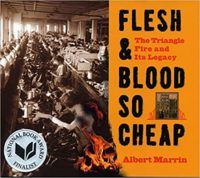
Flesh and Blood So Cheap: The Triangle Fire and Its Legacy by Albert Marrin
This is the story of the factory fire written for young readers, but Marrin holds nothing back in describing the escalating tensions and issues that led to the fire and 146 deaths. It wasn’t just that there were mostly women working in the factory—it was that many of them were Jewish and Italian immigrants and far more easily exploited by the factory. The factory workers were given few protections and expected to finish a massive quantity of work every day, and this book addresses all of the issues that made the factory fire somewhat inevitable.
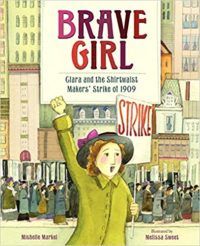
Brave Girl: Clara and the Shirtwaist Makers’ Strike of 1909 by Michelle Markel, Illustrated by Melissa Sweet
In a more upbeat children’s book, we follow the true-life story of Ukrainian immigrant Clara Lemlich who led a mass walkout of the Shirtwaist factory in 1909. This book is a great introduction for very young readers into the discontent and difficulties that immigrants and workers faced in the early 1900s.
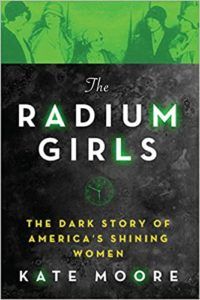
The Radium Girls: The Dark Story of America’s Shining Women by Kate Moore
After the Curies discovered radium, there was an immediate rush to include the “wonder” substance in every kind of material possible. Young girls populated the working floors of radium factories in the early 20th century and they were incredibly happy to do so. As many of them began to get sick and be unable to return to work or die, women and girls in the factory started fighting the dangerous conditions and speaking up about the effects of radium. Ultimately, their success saved a generation of young workers and the many people who were using products that contained radium.
Black Women’s Labor Activism
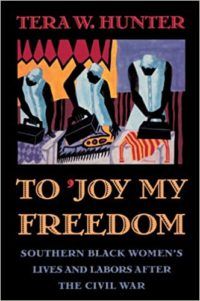
To ‘Joy My Freedom: Southern Black Women’s Lives and Labors after the Civil War by Tera W. Hunter
As anyone who’s taken an American history class should know, the emancipation of slaves after the Civil War did little to quell discrimination, and in many ways actively restricted freedom of movement for former slaves. Hunter follows this narrative specifically through the lens of Black women who became domestic workers for the people who had formerly been their slave masters in the South. She also traces the history of resistance to unfair working conditions and Black women’s involvement in The Great Migration to northern cities. This historical record is extremely important for understanding the massive exclusion of free Black women from women’s suffrage.
Women, Race & Class by Angela Y. Davis
A classic of the genre, Angela Davis outlines all of the ways racism and classism have hampered progressive movements in history. It was not only that organizers were racist, but they didn’t see the value in including poor and disenfranchised people in their movements. She outlines the many injustices and exclusionary tactics that kept Black women out of these movements and allowed white women to gain political ground at their expense, especially during the suffrage movement. It is an especially relevant read right now.
Household Workers Unite: The Untold Story of African American Women Who Built a Movement by Premilla Nadasen
Although this story follows labor activism of the 1950s to 1970s, Premilla Nadasen covers labor history that excluded the organization of Black women activists. Still pushed into domestic labor, Black women started organizing and pushing not to be seen as docile house servants. They demanded and stated that they deserved equal recognition in the labor movement and equal representation under the law. This is a great book to read in conjunction with any civil rights history because it addresses the same concerns but from a specific, organized group of Black women labor activists.
Complicated Histories
Overall, there isn’t a simple answer to the issue of women’s suffrage and labor activism. They were political groups that came together for political advantage when necessary, and drifted when they disagreed or didn’t need each other. Labor activism and feminist groups continue today, and organizations like the National Domestic Workers Alliance address contemporary labor issues especially for women. Hopefully we can all come to a larger, more inclusive understanding of these diverse and messy movements to inform our organizing today.
Also In This Story Stream
- Anti-Suffragette Literature: Not So Different From Modern Media After All
- Learn About Women’s Suffrage Movements Across the Globe
- Young People Have Always Been Radicals: Suffrage in YA Fiction
- 11 Great Biographies of U.S. Suffragists
- Poetry From the Suffrage Movement
- What’s She Got In Her Pocketses? Women’s Suffrage and Pockets
- 5 Books About the Influence of Black Women in the Suffrage Movement
- 8 Books About the History of Women’s Suffrage in America



















